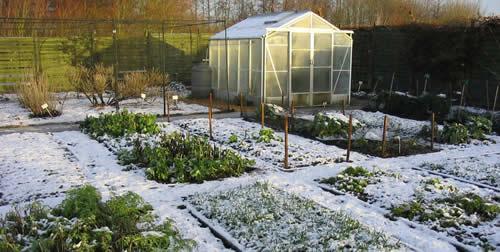
Outside it is cold and drizzly. Inside we are toasty warm and spend much of our time tending the fire and drinking tea. But with the arrival of the seed catalogs during the first week of January, the ‘TO DO’ list grows, and quickly!
As I spy the tips of daffodils peeking up, (almost yelling, I’M COMING!), decisions about varieties and what we’ll need this year press forward. I must consider diseases and pests that may bother us again this growing season.
There are questions to settle:
-
What will we grow in the primary school garden?
-
What will we grow as staples this year in the communal garden?
-
What kind of cold frame will we build since we are in need of a new one?
This can be a BUSY time – write your own list!
THREE THINGS FOR JANUARY
 1. Take a seed inventory
1. Take a seed inventory
Take a look at what seed you have from last year. What did you save? What do you need to purchase? Do you have enough? Will it still be viable?
Conduct a germination test with 25 seeds on a wet paper towel to see if you have reasonable germination. If the germination rate is over 50%, use the seed up this year, planting more heavily to obtain the necessary plants. If it is less than 50% it is time to order more. Our Sow True Seed planting guide includes information on general seed viability for different crops.

2. Choose your garden crops, order seeds, and make a map of your garden plan
Ideally, your garden space has previously been determined; a flat area getting 6 or more hours of sun a day is what you will need for a successful vegetable garden. Draw a diagram of each bed and where each crop will be planted. Plan on rotating your crops if you have an established garden. For example, solanaceous plants such as tomatoes, potatoes and peppers share diseases and insect pests, so do not plant those in the same spot two years in a row (same for brassicas). And finally, don’t plant your tallest plants where they will rob all the sun from the shortest. Thinking through your garden plan is an important way of preventing mistakes that happen in the rush of planting season.
3. Determine your planting calendar
Plan which plants you will grow from seed or order as starts. Collect planting dates for your crops, write them down and follow your plan! The Sow True Seed planting guide has soil temperatures and planting guidelines for North Carolina. Other states often have guidelines published by the state extension service. There is a vast amount of information on this website for all the seed Sow True sells, or order a free catalog (it’s educational as well as inspirational!).
Brassica transplants like cabbage and broccoli require roughly 5 to 7 weeks prior to the planting date; tomatoes, peppers and eggplants take 5 to 8 weeks. Starting seed for these crops is common by early February. Not all crops do best by growing transplants, so keep on track by including planting dates on your calendar for direct sown crops .
Enjoy January, it is full of the hope of a new season and all the excitement it brings!



 1. Take a seed inventory
1. Take a seed inventory
